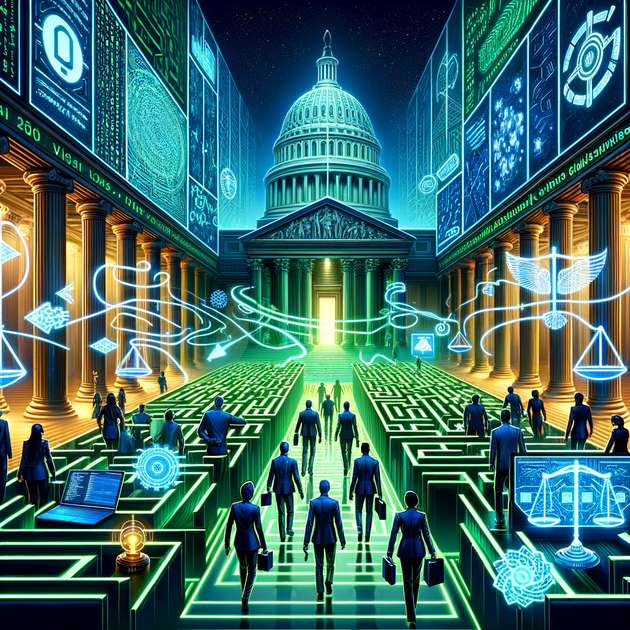Navigating the AI Ethics Maze: Tips for Government Engineers

The world of artificial intelligence (AI) is rapidly evolving, but one area that remains a significant challenge is the ethical integration of AI technologies, particularly within government projects. How can AI engineers, often seen as pragmatic and precise, effectively navigate the murky waters of AI ethics?
The Black and White Nature of Engineering
AI engineers are trained to view problems in terms of clear and concrete parameters—right versus wrong, functional versus non-functional. Hence, when faced with the abstract and often ambiguous principles of ethics, it can seem like an insurmountable task. Beth-Ann Schuelke-Leech, an associate professor at the University of Windsor, aptly put it, “Ethics is not an end outcome but a continuous process.”
The Role of Standards and Compliance
Compliance standards serve as useful guidelines, but often lack the power of law. Engineers are more likely to adhere to standards that directly impact the functionality and success of their projects. Voluntary compliance with ethical standards, however, falls into a gray area.
“Voluntary standards from bodies like IEEE are crucial but usually represent collective industry intentions rather than mandates,” explained Schuelke-Leech.
Simplifying Ethical Guidelines
One of the significant hurdles is the complex language often used in ethical discussions. Engineers, who have been immersed in technical jargon from an early age, may find terms like “ontological” off-putting. Simplifying ethical guidelines and making them actionable can bridge this gap.
The “Messy and Difficult” Pursuit of Ethics
The practice of ethical AI requires rigorous, repeatable thinking within context, making it a challenging endeavor. Sara Jordan, senior counsel at the Future of Privacy Forum, highlighted the nuanced nature of AI ethics, noting its dependency on multiple theories, frameworks, and constructs.

“The pursuit of ethical AI is messy and context-laden. It’s not about reaching an end, but about following a thoughtful process,” Jordan emphasized.
Leaders’ View on Integrating Ethics into AI Development
An intriguing discussion at the AI World Government conference showcased the importance of weaving ethics into AI from the ground up. Ross Coffey of the US Naval War College and Carole Smith from Carnegie Mellon University stressed the importance of increasing ethical literacy among AI developers.
Training and Ongoing Education
Taka Ariga, Chief Data Scientist at the US Government Accountability Office, noted a gap in the educational curriculum where data scientists are trained without much emphasis on ethics. This highlights a need for incorporating ethical training into technical education.
“Accountable AI is essential, but not all engineers are naturally inclined to this mindset without adequate training,” Ariga explained.
Moving Towards a Unified Ethical Framework
Panelists at the AI World Government conference discussed the potential for a unified ethical framework, although consensus was that complete global alignment may be challenging. Carole Smith suggested that existing treaties could serve as platforms for these ethical discussions.
The European Commission, often regarded as a forerunner in AI ethics, has set standards that can act as benchmarks for other nations. Finding common ground, particularly in areas critical to national security, could pave the way for more cohesive ethical practices.
Getting Engineers on Board
Ultimately, for AI ethics to become mainstream among AI engineers, there needs to be a concerted effort from management to integrate these principles into everyday projects.
In conclusion, the integration of AI ethics into government projects is a complex yet crucial endeavor. By simplifying ethical guidelines, enhancing ethical training, and fostering a collaborative environment, we can bridge the gap between engineering precision and ethical principles. Let’s continue this conversation and work towards a future where ethical AI is the norm, not the exception.
Join the Discussion
What are your thoughts on integrating ethics into AI? Have you faced any challenges or successes in your projects? Share your experiences and join the discussion below.
